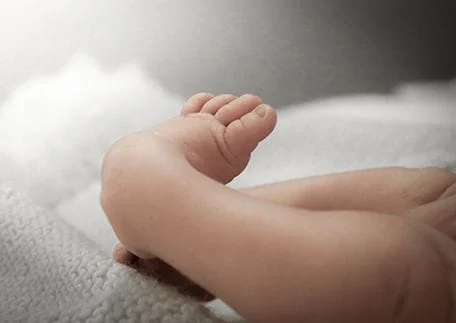
What is Clubfoot?
Clubfoot is a lower limb disorder that affects both the lower feet and legs. Typically a congenital condition, patients with clubfoot experience one or both of their feet turn downwards and inwards. The severity of symptoms differ from one patient to the next and can be categorized as:
- mild—where the foot is still flexible
- severe—where the foot is rigid and unable to move
Clubfoot occurs in one in every 4500 births in the United States every year, with approximately 50% of each having the condition affect both feet.
What Are the Causes of Clubfoot?
Clubfoot is primarily a congenital condition of the lower limbs. It occurs as a result of the tissues that are integral for connecting muscle to the bone being too short and causing the foot to point inwards and downwards. Other causes of clubfoot include:
- genetics—patients with family members who have clubfoot are at a higher risk for developing it themselves
- genetic syndrome—studies show that patients with trisomy 18 are predisposed to clubfoot
- gender—men may be more predisposed to developing clubfoot than women
- spinal cord tumors
- viral infection
- cramped position of developing fetus during pregnancy
What Are the Symptoms of Clubfoot
Clubfoot most commonly affects babies and younger patients. They may experience the following symptoms:
- inability to bear weight on one or both feet
- pain
- placing weight on the outer side of the foot leading to pressure and friction—can lead to blisters and infection
- misshapen bones—if left untreated
- small calf muscles—may also be weak
- tight Achilles tendon
- narrow heel that points downward
- forefoot turns inward
What to Expect During Treatment for Clubfoot at the Podiatrist
Treatment of clubfoot depends on the severity of symptoms, your complete health history that includes environmental and genetic factors. Success in treatment depends on if the clubfoot is mild—bones can be shaped easily—or severe—rigidity makes treatment long and complicated.
Your podiatrist will compose a treatment plan that will include:
- use of a cast to mold the foot into the correct position—best done shortly after birth
- gentle stretching of lower limbs and recasting over a period of several months up to three years to improve the position of one or both club feet. This is known as the Ponseti method and involves physical therapy, as well as splinting and taping of the foot
- braces—to prevent the foot from relapsing
- surgery—in case other forms of treatment do not work
